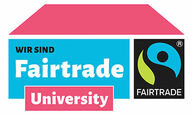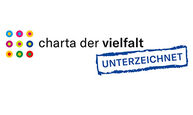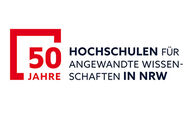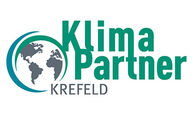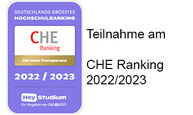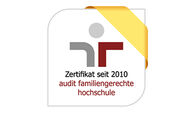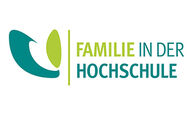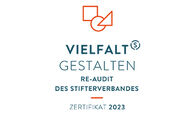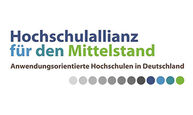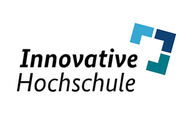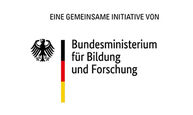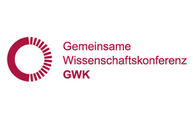Textbook
Krämer, J. & Prange, A. (2023). Food microbiology. 8th edition, UTB 1421 paperback, Eugen Ulmer Verlag, Stuttgart, 420 pp.
Krämer, J. & Prange, A. (2017). Food microbiology. 7th edition, UTB 1421 paperback, Eugen Ulmer Verlag, Stuttgart, 400 pp.
Journal articles (peer-reviewed)
54 Szlachetko, J., Szade, J., Beyer, E., Błachucki, W., Ciochoń, P., Dumas, P., Freindl, K., Gazdowicz, G., Glatt, S., Guła, K., Hormes, J., Indyka, P., Klonecka, A., Kołodziej, J.,Kołodziej, T., Korecki, J., Korecki, P., Kosiorowski, F., Kosowska, K., Kowalski, G., Kozak, M., Kozioł, P., Kwiatek, W., Liberda, D., Lichtenberg, H., Madej, E., Mandziak, A., Marendziak, A., Matlak, K., Maximenko, A., Nita, P., Olszowska, H., Panaś, R., Partyka-Jankowska, E., Piszak, M., Prange, A., Rawski, M., Roman, M., Rosmus, M., Sikora, M., Sławek, J., Sobol, T., Sowa, K., Spiridis, N., Stępień, J., Szczepanik, M., Ślęzak, T., Tyliszczak, T., Ważny, G., Wiechecki, J., Wilgocka-Ślęzak, D., Wolanin, B., Wróbel, P., Wróbel, T., Zając, M., Wawrzyniak, A. & Stankiewicz, M. (2023). SOLARIS National Synchrotron Radiation Centre in Krakow, Poland. The European Journal of Physics Plus 138, 1-10., https://doi.org/10.1140/epjp/s13360-022-03592-9, (open access publication).
53. Thume, M., Lange, J., Unkel, M., Prange, A. & Schürmeyer, M. (2022). Blockchain-based traceability in the food industry: requirements analysis along the food supply chain. International Journal of Sustainable Agricultural Management and Informatics 8, 219-241.
52. Hormes, J., Klysubun, W., Göttert, J., Lichtenberg, H., Maximenko, A., Morris, K., Nita, P., Prange, A., Szade, J., Wagner, L. & Zajac, M. (2021). A new SOLARIS beamline optimized for X-ray spectroscopy in the tender energy range. Nuclear Inst. and Methods in Physics Research B 489, 76-81.
51 Schlösser, I. & Prange, A. (2019). Effects of selected natural preservatives on the mycelial growth and ochratoxin A production of the food-related moulds Aspergillus westerdijkiae and Penicillium verrucosum. Food Additives and Contaminants Part A 36, 1411-1418.
50. Schlösser, I. & Prange, A.* (2019).Antifungal activity of selected natural preservatives against Aspergillus westerdijkiae and Penicillium verrucosum and the interactions of these preservatives with food components. Journal of Food Protection 82, 1751-1760.
49.Prange, A., Sari, M., Ameln von, S., Hajdu, C., Hambitzer, R., Ellinger, S. & Hormes, J. (2019). Characterization of selenium speciation in selenium-enriched button mushrooms(Agaricus bisporus) and selenized yeasts (dietary supplement) using X-ray absorption near-edge structure (XANES) spectroscopy. Journal of Trace Elements in Medicine and Biology 51, 164-168.
48. Ameln von, S., Dicks, L., Prange, A. & Ellinger, S. (2018).Dietary supplements made from mushrooms. An overview of health-related aspects with a focus on cardiometabolic effects and an overview on food law regulations. Ernaehrungsumschau-International 65, 92-99.
47 Schlösser, I. & Prange, A. (2018). Antifungal activity of selected natural preservatives on the foodborne molds Penicillium verrucosum and Aspergillus westerdijkiae. FEMS Microbiology Letters 365, 1-8. doi: 10.1093/femsle/fny125
46. Etter, D., Rupp, A., Prange, A. & Drissner, D. (2018).Inactivation of mould spores in a model system on raisins by low energy beam. Food Control 92, 357-361.
45. Zanzen, U., Bovenkamp-Langlois, G. L., Klysubun, W., Hormes, J. & Prange, A. (2018). The interaction of cooper ions with Staphylococcus aureus, Pseudomonas aeruginosa, and Escherichia coli - an X-ray absorption near edge structure (XANES) spectroscopy study. Archives of Microbiology 200, 401-412.
44. Sari, M., Prange, A., Lelley, J.I., & Hambitzer, R. (2017). Screening study of beta-glucan content in commercially cultivated and wild growing mushroom species. Food Chemistry 216, 45-51.
43.Chitpirom, K., Akaracharanya, A., Tanasupawat, S., Leepipatpiboon, N., Kim, K.-W., Hormes, J., & Prange, A. (2017). Characterization of arsenic speciation using XANES spectroscopy in Comamonas terrae, an arsenite-oxidizing bacterium isolated from agricultural soil in Thailand. Journal of Food, Agriculture and Environment 15, 44-47.
42. Grube, S., Schönling, J., & Prange, A. (2015).Development and evaluation of a triplex-real-time PCR system to detect the plant-pathogen molds Alternaria spp., Fusarium spp. and C. purpurea. Journal of Microbiological Methods 119, 180-188.
41 Grube, S., Schönling, J., & Prange, A. (2015). Comparison of different methods for the recovery of DNA from spores of mycotoxin producing moulds in spiked food samples. Letters in Applied Microbiology 60, 524-530.
40. Engel, A.S., Bovenkamp, G.L., Prange, A. & Hormes, J. (2014).In situ speciation of sulfur vapors by X-ray absorption near edge structure spectroscopy. Chemical Geology 380, 1-6.
39. Bovenkamp, G. L., Zanzen, U., Katla S. K., Hormes, J. & Prange, A. (2013).The interaction of silver ions with Staphylococcus aureus, Listeria monocytogenes, and Escherichia coli - an X-ray absorption near edge structure (XANES) spectroscopy study. Applied and Environmental Microbiology 79, 6385-6390.
38 Zanzen, U., Bovenkamp, G. L., Krishna, K. S., Hormes, J. & Prange, A. (2013). Antibacterial action of copper ions on food-contaminating bacteria. Acta Biologica Szegediensis 57, 149-151.
37. chitpirom, K., Akaracharanya, A., Tanasupawat, S., Leepipatpiboon, N., Kim, K.-W., Hormes, J., & Prange, A.* (2012). Characterization of arsenic speciation in Comamonas sp. A3-3, an arsenite-oxidizing bacterium isolated from agricultural soil in Thailand using XANES spectroscopy. Journal of General and Applied Microbiology 58, 245-251.
36. Bovenkamp, G. L., Zanzen, U., Katla S. K., Hormes, J. & Prange, A. (2013). The interaction of silver ions with Staphylococcus aureus, Listeria monocytogenes, and Escherichia coli - an X-ray absorption near edge structure (XANES) spectroscopy study. Applied and Environmental Microbiology 79, 6385-6390.
35. Bovenkamp, G. L., Prange, A., Schuhmacher, W., Ham, K., Smith, A. P. & Hormes, J. (2013).Lead uptake in diverse plant families: a study applying X-ray absorption near edge spectroscopy. Environmental Science and Technology 47, 4375-4382.
34. Chitpirom, K., Tanasupawat, S., Akaracharanya, A., Leepipatpiboon, N., Prange, A., Kim, K.-W., Lee, K. C. & Lee, J.-S. (2012).Comamonas terra sp. nov., an arsenite-oxidizing bacterium isolated from agricultural soil in Thailand. Journal of General and Applied Microbiology 58, 245-251.
33. Wang, J., Hitchcock, A. P., Karunakaran, C., Prange, A., Franz, B., Harkness, T., Liu, Y., Obst, M., & Hormes, J. .(2011).3D Chemical and elemental imaging by STXM spectro-tomogragphy. American Institute for Physics: Conference Proceedings 1365: 215-218. XRM2010.
32. Franz, B., Balkundi, S. S., Dahl, C., Lvov, Y. M. & Prange, A. (2010). Layer-by-layer nano-encapsulation of microbes: A new concept of controlled, modified architecture of cells surfaces and to investigate uptake of compounds, substrates and particles into cells. Macromolecular Biosciences 10, 164-172.
31 Franz, B., Gerke, T., Lichtenberg, H., Hormes, J., Dahl, C. & Prange, A. (2009). Unexpected extracellular sulfur species during growth of Allochromatium vinosum with reduced sulfur compounds. Microbiology 155, 2766-2774.
30. Franz, B., Lichtenberg, H., Hormes, J., Dahl, C. & Prange, A.* (2009). The speciation of soluble sulfur compounds in bacterial culture fluids by X-ray absorption near edge structure spectroscopy. Environmental Technology 30, 1281-1289.
29. Balkundi, S. S., Franz, B., Lvov, Y. M. & Prange, A. (2008). Polyelectrolyte nanoencapsulation of bacteria through LbL assembly. Polymer Materials Science and Engineering 99, 635-636.
28. Lee, Y.-J., Prange, A., Lichtenberg, H., Rohde, M., Dashti, M. & Wiegel, J. (2007). In situ speciation of sulfur globules produced from thiosulfate reduction by Thermoanaerobacter sulfurigignens. Journal of Bacteriology 189, 7525-7529.
27. Milles, J., Krämer, J. & Prange, A. (2007).Development of a proteomic approach to monitor protein expression in mycotoxin producing moulds. Mycotoxin Research 23, 161-165.
26 Milles, J., Krämer, J. & Prange, A. (2007). In vivo competitive interactions of Fusarium graminearum with Aspergillus ochraceus and Penicillium verrucosum in suboptimal stored wheat with regard to mycotoxin production. Journal of Food, Agriculture & Environment 5, 384-388.
25. Kizilkaya, O., Singh, V., Desta, Y., Pease, M., Roy, A., Scott, J., Goettert, J., Morikawa, E., Hormes, J. & Prange, A. (2007).The infrared microspectroscopy beamline at CAMD. American Institute of Physics Proceedings Series Journal 879, 1759-1762.
24. Kizilkaya, O., Prange, A., Steiner, U., Oerke, E.-C., Scott, J. D., Morikawa, E. & Hormes, J. (2007). The Infrared microspectroscopy beamline at CAMD and its application in plant-pathogen interactions. Nuclear Instruments and Methods in Physics Research A 582, 274-276.
23 Lee, Y.-J., Dashti, M., Prange, A., Rainey, F. A., Rohde, M., Whitman, W. B. & Wiegel, J. (2007). Thermoanaerobacter sulfurigignens sp. nov., a novel anaerobic thermophilic bacterium reducing 1 M thiosulfate to elemental sulfur and tolerating 90 mM sulfite. International Journal of Systematic and Evolutionary Microbiology 57, 1429-1434.
22. Franz, B., Modrow, H., Hormes, J. & Dahl, C. Prange, A. (2007).Elemental sulfur oxidation in the phototrophic purple sulfur bacterium Allochromatium vinosum. Microbiology 153, 1268-1274.
21 Engel, A. S., Lichtenberg, H., Prange, A. & Hormes, J. (2007).Speciation of sulfur from naturally-occurring, filamentous microbial mats from sulfidic cave springs using X-ray absorption near edge spectroscopy. FEMS Microbiology Letters 269, 54-62.
20. Saß, V., Milles, J., Krämer, J. & Prange, A. (2007).Competitive interactions of Fusarium graminearum and Alternaria alternata in vitro in relation to deoxynivalenol and zearalenone production. Journal of Food, Agriculture & Environment 5, 257-261.
19 Lichtenberg, H., Prange, A., Modrow, H. & Hormes, J. (2007). Characterization of sulfur compounds in coffee beans by sulfur K-XANES spectroscopy. American Institute of Physics Proceedings 882, 824-826.
18. Prange, A.*, Oerke, E.-C., Steiner, U., Bianchetti, C. M., Hormes, J. & Modrow, H. (2005).Spatially resolved sulfur K-edge XANES spectroscopy for the in situ-characterization of the fungus-plant interaction Puccinia triticina and wheat leaves. Journal of Phytopathology 153, 627-632.
17 Prange, A., Modrow, H., Hormes, J., Krämer, J. & Köhler, P. (2005). Influence of mycotoxin producing fungi(Fusarium, Aspergillus, Penicillium) on gluten proteins during suboptimal storage of wheat after harvest and competitive interactions between field and storage fungi. Journal of Agricultural and Food Chemistry 53, 6930-6938.
16. Prange, A., Birzele, B., Krämer, J., Meier, A., Modrow, H. & Köhler, P. (2005). Fusarium-inoculated wheat: Deoxynivalenol contents and baking quality in relation to infection time. Food Control 16, 739-745.
15. Saß, V., Milles, J., Krämer, J. & Prange, A. (2005).Simple and efficient cell disruption of extremely small quantities of mycelium of phytopathogenic mycotoxin-producing moulds for quantitative extraction of genomic DNA. Mycotoxin Research 21, 213-217.
14. Prange, A.*, Birzele, B., Hormes, J. & Modrow, H. (2005).Investigation of different human pathogenic and food contaminating bacteria and moulds grown on selenite/selenate and tellurite/tellurate by X-ray absorption spectroscopy. Food Control 16, 723-728.
13. Birzele, B. & Prange, A. (2004).Weeds in organic farming: Seeds of Galium aparine as possible source of inoculum for Fusarium infection and elevated mycotoxin content? Journal of Applied Botany and Food Quality 78, 164-168.
12 Prange, A., Engelhardt, H., Trüper, H. G. & Dahl, C. (2004). Towards the role of the sulfur globule proteins of Allochromatium vinosum: Interposon mutagenesis of the sulfur globule protein genes and expression studies by real-time RT-PCR. Archives of Microbiology 182, 165-174.
11. Prange, A.*, Birzele, B., Krämer, J., Chauvistré, R., Modrow, H., Hormes, J. & Köhler, P. (2003).Characterization of sulfur speciation in low molecular weight subunits of glutenin after reoxidation with potassium iodate and potassium bromate at different pH values using X-ray absorption near-edge structure (XANES) spectroscopy. Journal of Agricultural and Food Chemistry 51, 7431-7438.
10 Birzele, B. & Prange, A. (2003). Fusarium spp. and storage fungi in suboptimally stored wheat: mycotoxins and influence on wheat gluten proteins. Mycotoxin Research 19, 162-170.
9 Prange, A.* & Modrow, H. (2002). X-ray absorption spectroscopy and its application in biological, agricultural and environmental research. Re/Views in Environmental Science & Bio/Technology 1, 259-276.
8. Prange, A., Dahl, C., Trüper, H. G., Behnke, M., Hahn, J., Modrow, H. & Hormes, J. (2002). Investigation of SH-bonds in biologically important compounds by X-ray absorption spectroscopy. European Physical Journal D 20, 589-596.
7. Prange, A., Dahl, C., Trüper, H. G., Chauvistré, R., Modrow, H. & Hormes, J. (2002).X-ray absorption spectroscopy of bacterial sulfur globules: a detailed reply. Microbiology 148, 2268-2270.
6 Prange, A., Chauvistré, R., Modrow, H., Hormes J., Trüper, H. G. & Dahl, C. (2002). Quantitative speciation of sulfur in bacterial sulfur globules: X-ray absorption spectroscopy reveals at least three different species of sulfur. Microbiology 148, 267-276.
4 Antes, S., Birzele, B., Prange, A., Krämer, J., Meier, A., Dehne, H.-W. & Köhler, P. (2001). Rheological and breadmaking properties of wheat samples infected with Fusarium spp. Mycotoxin Research 17A, 76-80.
4 Prange, A., Kühlsen, N., Birzele, B., Arzberger, I., Hormes, J., Antes, S. & Köhler, P. (2001). Sulfur in wheat gluten: In situ analysis by X-ray absorption near edge structure (XANES) spectroscopy. European Food Research and Technology 212, 570-575.
3 Birzele, B., Prange, A., Schönling, J. & Krämer, J. (2000).Development of deoxynivalenol contents in relation to the PCR detection of potentially trichothecene producing Fusarium spp. during storage of wheat. Mycotoxin Research 16A, 46-49.
2 Birzele, B., Prange, A. & Krämer, J. (2000).Deoxynivalenol and ochratoxin A in German wheat and changes of level in relation to storage parameters. Food Additives and Contaminants 17, 1027-1035.
1 Prange, A., Arzberger, I., Engemann, C., Modrow, H., Schumann, O., Trüper, H. G., Steudel, R., Dahl, C. & Hormes, J. (1999). In situ analysis of sulfur in the sulfur globules of phototrophic sulfur bacteria by X-ray absorption near edge spectroscopy. Biochimica et Biophysica Acta 1428, 446-454.
Articles in textbooks / other journals
17 Lichtenberg, H., Elfenkemper, C., Mahltig, B., Prange, A., Hormes, J. & Klysubun, W. (2023). Synchrotron radiation for the analysis of inorganic fibers - especially basalt fibers. Melliand International 1/23, 29-31.
16. Ameln von, S., Messelhäußer, U. & Prange, A. (2023). A foodborne pathogen before the ECJ: application of food safety criteria for Listeria monocytogenes. ZLR- Journal of all food law, 1/2023, 129-137.
15 Ameln von, S., Holle, M. & Prange, A. (2021). Anticipated expert opinions in food law - legal requirements and practical relevance. Food and Law - LMuR 4/2021, 251-256.
14. Ameln von, S. & Prange, A. (2018).The new Swiss food law - an overview.DLR - Deutsche Lebensmittel-Rundschau - Analytik, Forschung, Prozesse, Recht 06/2018, 263-268.
13 Schlösser, I., Ameln von, S. & Prange, A.* (2018). Natural inhibitors - an alternative for chemical preservatives in the fight against mold? Rundschau für Fleischhygiene und Lebensmittelüberwachung 01/2018, 18-22.
12 Hilgenberg, B., Prange, A. & Vossebein, L. (2016). Testing and regulation of antimicrobial textiles. In: Antimicrobial Textiles. Elsevier Ltd, Woodhead Publishing Series in Textiles, 7-18.
11 Prange, A. & Zanzen, U. (2015). Microbiological-hygienic standards for community catering. In: Handbook of community catering, J. Wetterau, V. Peinelt & U. Fladung, 202-226.
10. Mandl, K., Schieck, J., Silhavy-Richter, K., Prange, A., Schneider, V., & Schmidt, H. (2015). Vines take up yeasts from soil and transport them through the vine to the stem and skins of grapes Ithaka Journal 2015, 349-355.
9. Prange, A. (2010/2014 updated). Molds in food, Praxishandbuch Behrs Verlag, loose-leaf collection, 21 pp.
8. Grube, S., Schönling, J., & Prange, A.* (2014). Molds in food - detection by DNA extraction and real-time PCR. DLR - Deutsche Lebensmittel-Rundschau - Analytik, Forschung, Prozesse, Recht 11/2014, 511-515.
7 Kindermann, M. & Prange, A. (2010). Hygiene aspects of preparation and temperature dependence of microorganism activity. Chapters 4.3, 4.4. in Food processing in the household, U. Gomm & W. Lichtenberg (eds.), aid Infodienst, Verbraucherschutz, Ernährung, Landwirtschaft e.V., Bonn, 109-115.
6 Prange, A., Hormes, J. & Modrow, H. (2008). X-ray absorption spectroscopy as a tool for the detection and identification of sulfur compounds in phototrophic organisms. In: Sulfur Metabolism in Phototrophic Organisms, R. Hell, C. Dahl, T. Leustek & D. Knaff, (Eds.) Series "Advances in Photosynthesis and Respiration", Springer, Berlin Heidelberg, 461-482.
5. Prange, A. (2008).Speciation analysis of microbiologically produced sulfur by X-ray absorption near edge structure (XANES) spectroscopy. In: Microbial Sulfur Metabolism, C. Friedrich & C. Dahl (Eds.), Springer, Berlin Heidelberg, 259-272.
4. Dahl, C. & Prange, A. (2006).Bacterial sulfur globules: Occurrence, structure and metabolism. In: Inclusions in Prokaryotes, chapter 2, J. M. Shively (Ed.). Series "Microbiology Monographs", Springer-Verlag, Berlin Heidelberg, 21-51.
3. Prange, A., Birzele, B., Modrow, H., Hormes, J. & Köhler, P. (2004).Analysis of sulphur speciation in gluten proteins by X-Ray Absorption Near Edge Structure (XANES) spectroscopy. In The Gluten Proteins, D. Lafiandra, S. Masci & R. D'Ovidio (Eds.), Royal Society of Chemistry (RSC), Cambridge, pp. 327-330. (ISBN 0-85404-633-X).
2. Birzele, B. & Prange, A. (2002). Wheat quality: mycotoxins, moulds and X-ray absorption near edge structure spectroscopy of gluten proteins. In Quality and Plant Breeding, ed. German Society for Quality Research DGQ e.V., Munich, 313-322. (ISBN 3-9805230-6-3).
1 Dahl, C., Prange, A. & Steudel, R. (2002). Metabolism of natural polymeric sulfur compounds. (Chapter 2) In: Biopolymers, Vol. 9. Miscellaneous Biopolymers and Biodegradation of Synthetic Polymers, A. Steinbüchel & S. Matsumura (Eds.), Wiley-VCH, Weinheim, 35-62. (ISBN 3-527-30228-X).




